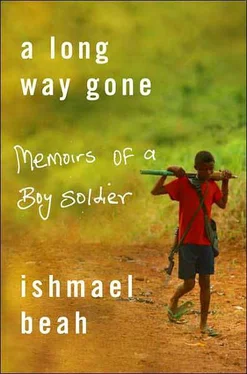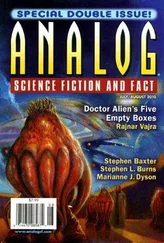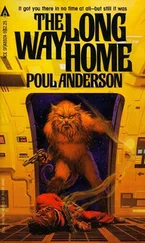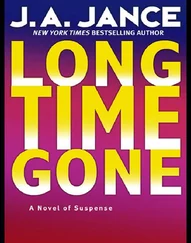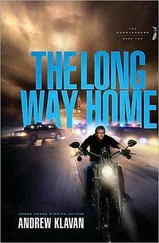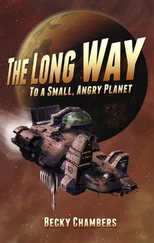1462The written history of Sierra Leone begins when Portuguese explorers land, naming the mountains surrounding what is now Freetown Serra Lyoa (Lion Mountains) due to their leonine shape.
1500–early 1700sEuropean traders stop regularly on the Sierra Leone Peninsula, exchanging cloth and metal goods for ivory, timber, and a small number of slaves.
1652The first slaves in North America are brought from Sierra Leone to the Sea Islands, off the coast of the southern United States.
1700–1800A slave trade thrives between Sierra Leone and the plantations of South Carolina and Georgia, where the slaves’ rice-farming skills make them particularly valuable.
1787British abolitionists help four hundred freed slaves from the United States, Nova Scotia, and Britain return to Africa to settle in what they call the “Province of Freedom,” in Sierra Leone. These Krio, as they come to be called, are from all areas of Africa.
1791Other groups of freed slaves join the “Province of Freedom” settlement, and it soon becomes known as Freetown, the name of the current capital of Sierra Leone.
1792Freetown becomes one of Britain’s first colonies in West Africa.
1800Freed slaves from Jamaica arrive in Freetown.
1808Sierra Leone becomes a British crown colony. The British government uses Freetown as its naval base for antislavery patrols.
1821–1874Freetown serves as the residence of the British governor, who also rules the Gold Coast (now Ghana) and Gambia settlements.
1827Fourah Bay College is established and rapidly becomes a magnet for English-speaking Africans on the West Coast. For more than a century, it is the only European-style university in western sub-Saharan Africa.
1839Slaves aboard a ship called the Amistad revolt to secure their freedom. Their leader, Sengbe Pieh—or Joseph Cinque, as he becomes known in the United States—is a young Mende man from Sierra Leone.
1898Britain imposes a hut tax in Sierra Leone, decreeing that the inhabitants of the new protectorate be taxed on the size of their huts as payment for the privilege of British administration. This sparks two rebellions in the hinterland: one by the Temne tribe and the other by the Mende tribe.
1951A constitution is enacted by the British to give some power to the inhabitants, providing a framework for decolonization.
1953Local ministerial responsibility is introduced, and Sir Milton Margai is appointed chief minister.
1960Sir Milton Margai becomes prime minister following the completion of successful constitutional talks in London.
April 27, 1961Sierra Leone becomes independent, with Sir Milton Margai as its first prime minister. The country opts for a parliamentary system within the Commonwealth of Nations. The following year, Sir Milton Margai’s Sierra Leone Peoples Party (SLPP), which led the country to independence, wins the first general election under universal adult franchise.
1964Sir Milton Margai dies, and his half brother Sir Albert Margai succeeds him as prime minister.
May 1967In closely contested elections, the All People’s Congress (APC) wins a plurality of the parliamentary seats. Accordingly, the governor general (representing the British monarch) declares Siaka Stevens—APC leader and mayor of Freetown—the new prime minister. Within a few hours, Stevens and Albert Margai are placed under house arrest by Brigadier David Lansana, the commander of the Republic of Sierra Leone Military Forces (RSLMF), on grounds that the determination of office should await the election of the tribal representatives to the house. Another group of officers soon stages another coup, only to be later ousted in a third coup, the “sergeants’ revolt.”
1968With a return to civilian rule, Siaka Stevens at last assumes office as prime minister. However, tranquility is not completely restored. In November, a state of emergency is declared after provincial disturbances.
1971The government survives an unsuccessful military coup. Also, a republican constitution is adopted, and Siaka Stevens becomes the first president of the republic.
1974Another failed military coup is launched against the government.
1977Students demonstrate against government corruption and embezzlement of funds.
1978The constitution is amended, and all political parties, other than the ruling APC, are banned. Sierra Leone becomes a one-party state, with the APC as its sole legal party.
1985Siaka Stevens retires and appoints Major General Joseph Saidu Momoh the next president of Sierra Leone. Momoh’s APC rule is marked by increasing abuses of power.
March 1991A small band of men who call themselves the Revolutionary United Front (RUF), under the leadership of a former corporal, Foday Sankoh, begin to attack villages in eastern Sierra Leone, on the Liberian border. The initial group is made up of Charles Taylor’s rebels and a few mercenaries from Burkina Faso. Their goal is to rid the country of the corrupt APC government. Fighting continues in the ensuing months, with the RUF gaining control of the diamond mines in the Kono district and pushing the Sierra Leone army back toward Freetown.
April 1992A group of young military officers, led by Captain Valentine Strasser, launches a military coup that sends Momoh into exile. They establish the National Provisional Ruling Council (NPRC) as the ruling authority in Sierra Leone. The NPRC proves to be nearly as ineffectual as the Momoh government at repelling the RUF. More and more of the country falls into the hands of the RUF fighters.
1995The RUF holds much of the countryside and are on the doorstep of Freetown. To control the situation, the NPRC hires several hundred mercenaries from private firms. Within a month, they have driven the RUF fighters back to enclaves along Sierra Leone’s borders.
1996Valentine Strasser is ousted and replaced by Brigadier General Julius Maada Bio, his defense minister. As a result of popular demand and mounting international pressure, the NPRC, under Maada Bio, agrees to hand over power to a civilian government via presidential and parliamentary elections, which are held in March 1996. Ahmad Tejan Kabbah, a diplomat who worked at the UN for more than twenty years, wins the presidential election under the banner of the SLPP.
May 1997Kabbah is overthrown by the Armed Forces Revolutionary Council (AFRC), a military junta headed by Lieutenant Colonel Johnny Paul Koroma, and the junta invites the RUF to participate in the new government.
March 1998The AFRC is ousted by the Nigerian-led ECOWAS Monitoring Group (ECOMOG) forces, and the democratically elected government of President Kabbah is reinstated.
January 1999The RUF launches another attempt to overthrow the government. Fighting reaches parts of Freetown again, leaving thousands dead and wounded. ECOMOG forces drive back the RUF attack several weeks later.
July 1999The Lomé Peace Accord is signed between President Kabbah and Foday Sankoh of the RUF. The agreement grants the rebels seats in a new government and all forces a general amnesty from prosecution. The government has largely ceased to function effectively, however, and at least half of its territory remains under rebel control. In October, the UN Security Council establishes the United Nations Mission in Sierra Leone (UNAMSIL) to help implement the peace agreement.
Читать дальше
